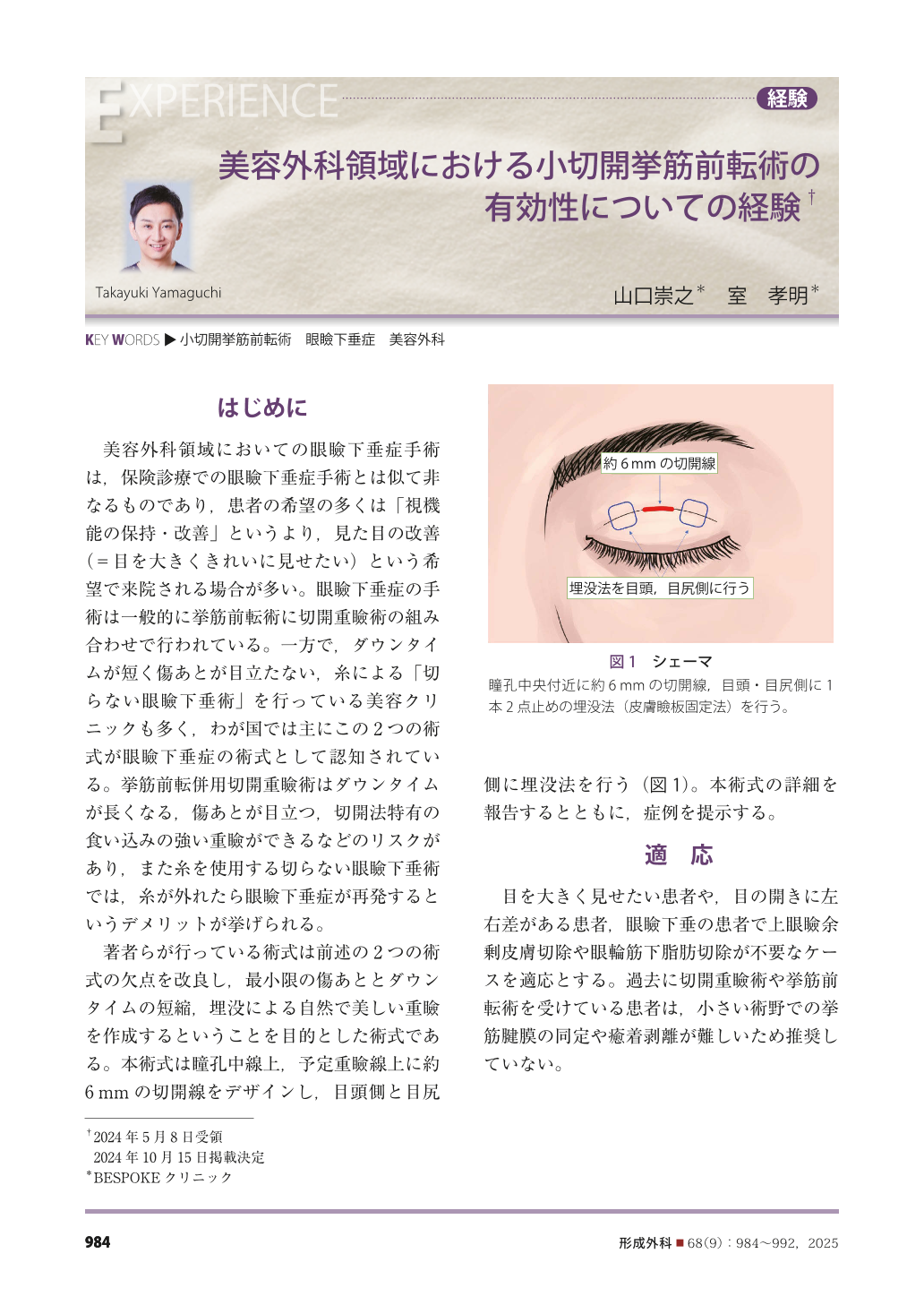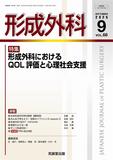Japanese
English
- 有料閲覧
- Abstract 文献概要
- 1ページ目 Look Inside
はじめに
美容外科領域においての眼瞼下垂症手術は,保険診療での眼瞼下垂症手術とは似て非なるものであり,患者の希望の多くは「視機能の保持・改善」というより,見た目の改善(=目を大きくきれいに見せたい)という希望で来院される場合が多い。眼瞼下垂症の手術は一般的に挙筋前転術に切開重瞼術の組み合わせで行われている。一方で,ダウンタイムが短く傷あとが目立たない,糸による「切らない眼瞼下垂術」を行っている美容クリニックも多く,わが国では主にこの2つの術式が眼瞼下垂症の術式として認知されている。挙筋前転併用切開重瞼術はダウンタイムが長くなる,傷あとが目立つ,切開法特有の食い込みの強い重瞼ができるなどのリスクがあり,また糸を使用する切らない眼瞼下垂術では,糸が外れたら眼瞼下垂症が再発するというデメリットが挙げられる。
著者らが行っている術式は前述の2つの術式の欠点を改良し,最小限の傷あととダウンタイムの短縮,埋没による自然で美しい重瞼を作成するということを目的とした術式である。本術式は瞳孔中線上,予定重瞼線上に約6 mmの切開線をデザインし,目頭側と目尻側に埋没法を行う(図1)。本術式の詳細を報告するとともに,症例を提示する。
Ptosis surgery is generally performed as an incisional blepharoplasty with advancement of the levator aponeurosis, but many cosmetic surgeons perform “nonincisional blepharoptosis surgery” using thread. These two techniques are recognized as the main treatment methods for blepharoptosis in Japan. Notably, an incisional blepharoplasty with advancement of the levator aponeurosis has the following risks: a long downtime, prominent scarring, and unnatural eyelids with a strong incisional bite that is characteristic of the incisional technique. In contrast, the nonincisional blepharoptosis surgery technique uses a 0.6-cm incision for the anterior advancement of the elevator muscle and implantation in order to create a heavy eyelid with minimal scarring, a short downtime, and a natural-looking heavy eyelid using implantation. We will report the details of this technique along with a case presentation.

Copyright© 2025 KOKUSEIDO CO., LTD. All Rights Reserved.


